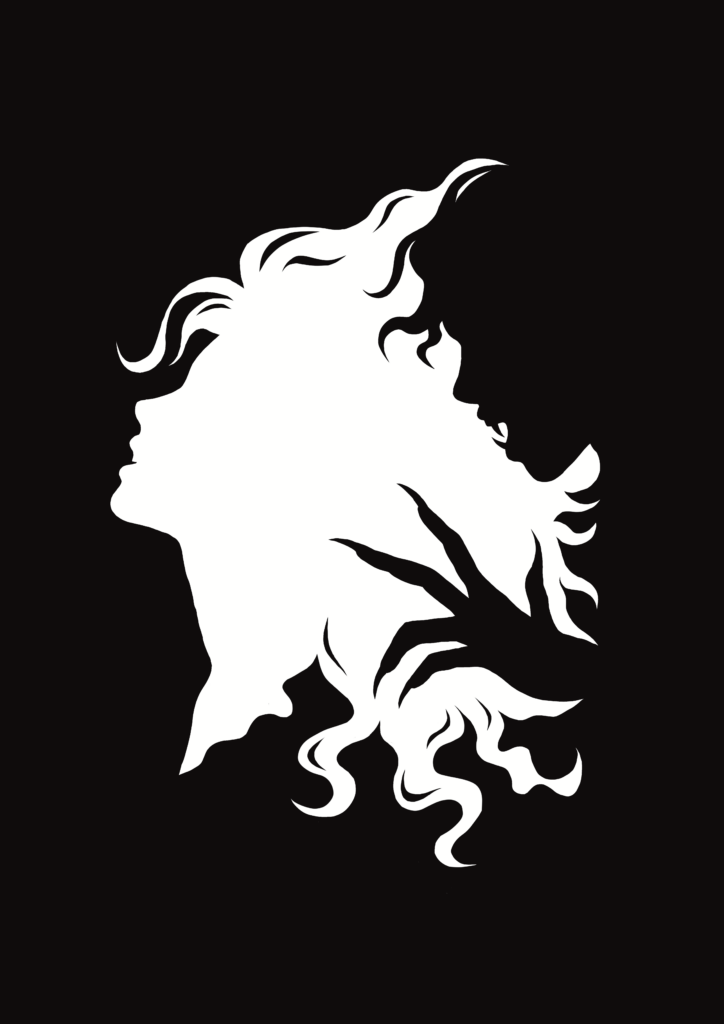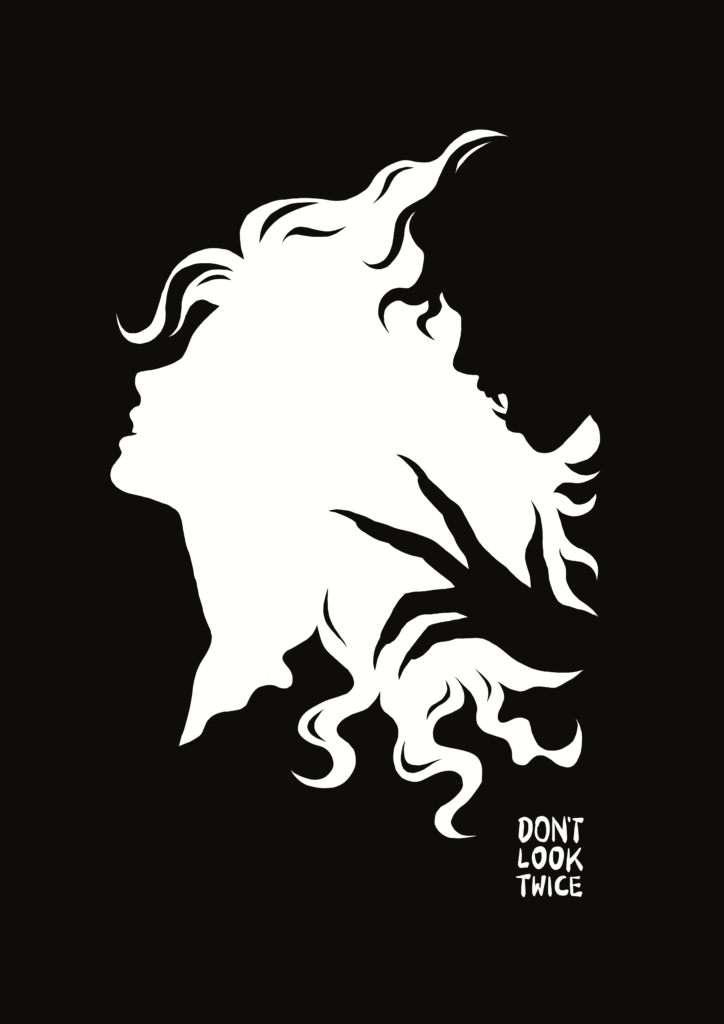A project I did recently that correlates a lot to the topic of visual storytelling is an illustration I did using the figure-ground principle, one of the Gestalt Principles. The Gestalt Principles are principles of human perception that describe how humans group similar elements, recognize patterns and simplify complex images when we perceive objects. We as designers can use these principles in order to make our designs easily understandable and leave a stronger impression.
The figure-ground principle explains how human brains always try to split an image into a figure and the background on which the figure sits.
I was fascinated by the kind of black-and-white pictures that reveal a different image depending on whether the viewer looks at the black part of the image versus the white part, so I wanted to create an illustration that uses this technique and also plays with the concept of black and white or light and dark in a more literal way.
As I learned from the research in the previous semester, a dark atmosphere is commonly associated with the unknown, scary or evil, while a positive, friendly mood is often expressed with white or light colors.
That’s why my illustration shows a black silhouette of a creature with fangs and sharp claws creeping up on the white silhouette of a seemingly good creature. This image could carry the meaning of good and evil always being intertwined, nothing and no one is ever purely good or evil and one can’t exist without the other. That sounds very philosophical, but I think the figure-ground principle is just perfect if one wants to convey a philosophical meaning like this. Used in real life, I think this illustration or generally illustrations with this concept could work very well as a movie poster, maybe for a movie that shows a conflict or a relationship between two characters, one seemingly evil and the other seemingly good, or an inner conflict of a character.
On one version of the illustration, I added “DON’T LOOK TWICE” because, of course, the viewer has to look exactly twice – once at the white space and once at the black space – to see the whole picture, but in the context of the picture, the evil may reveal itself or take over if the “good” character looked twice.

